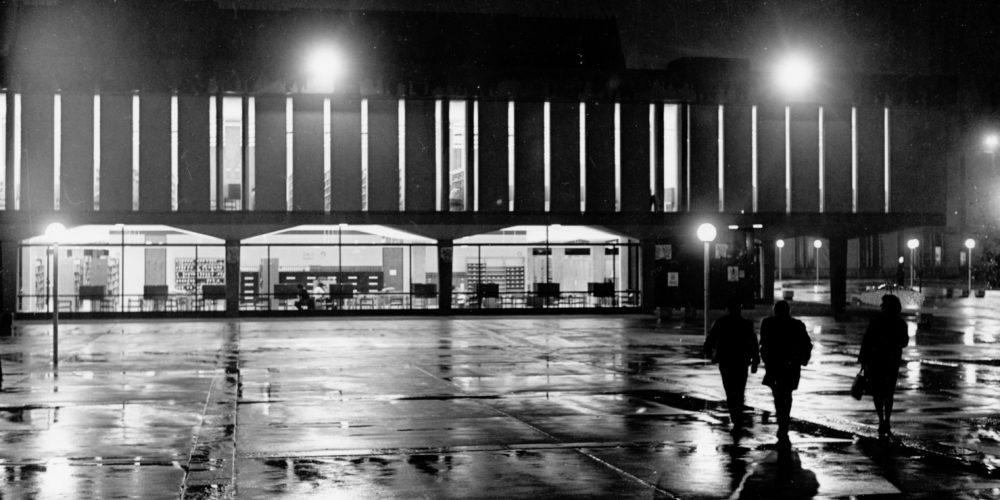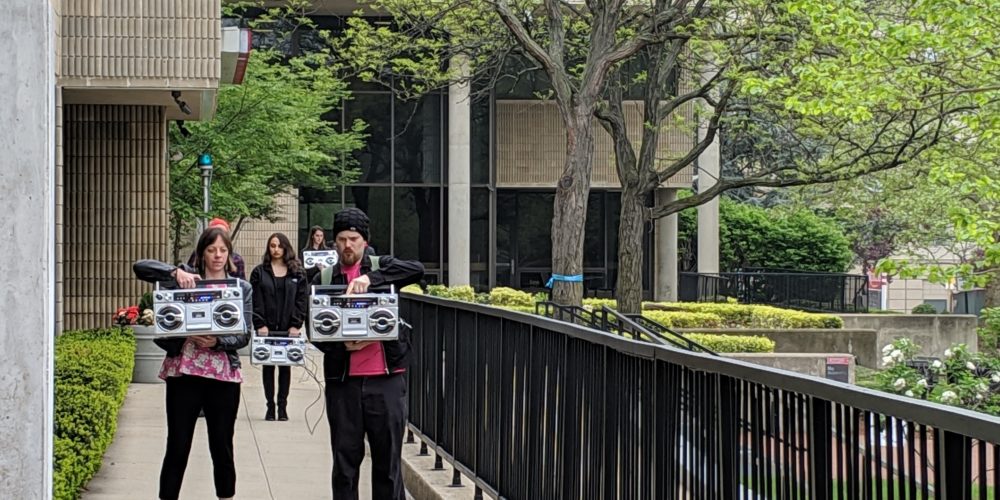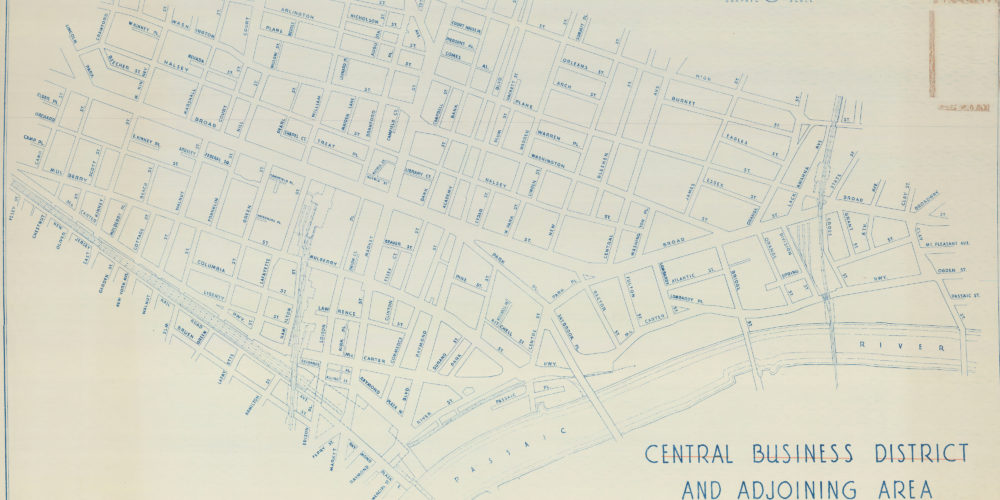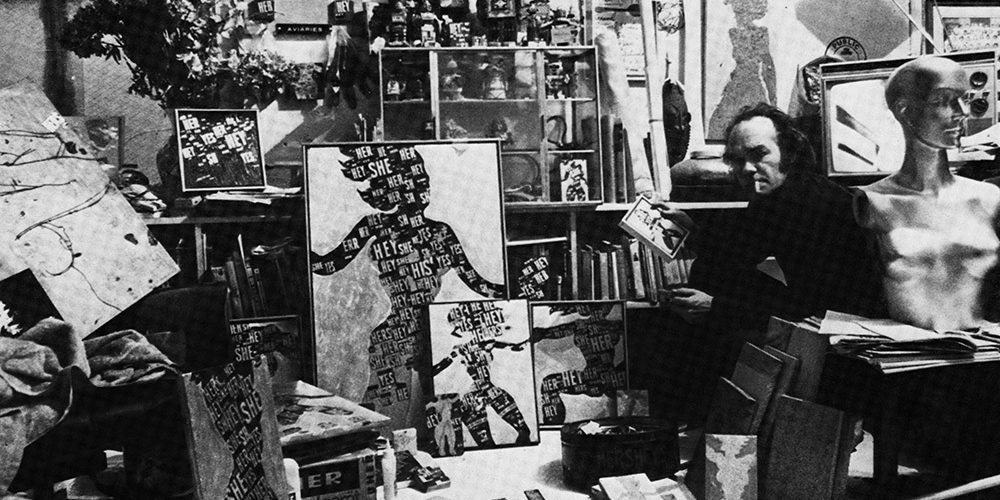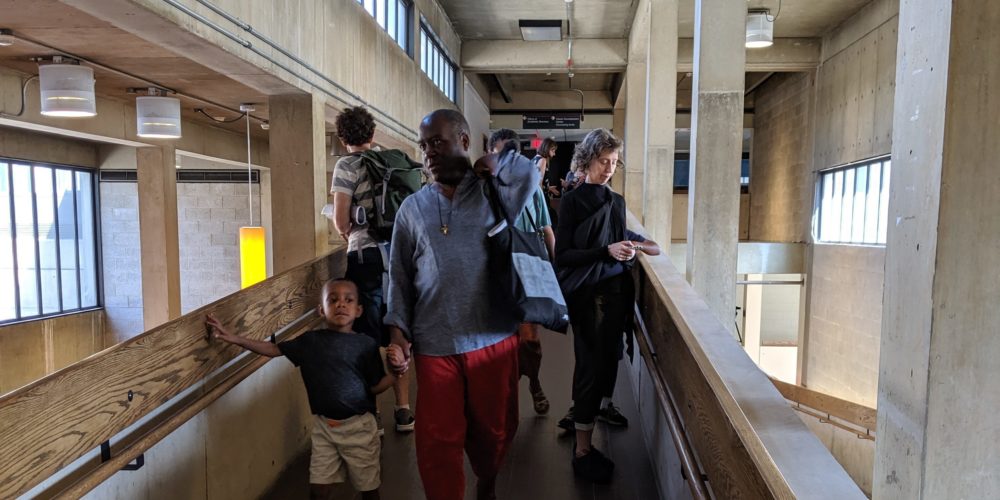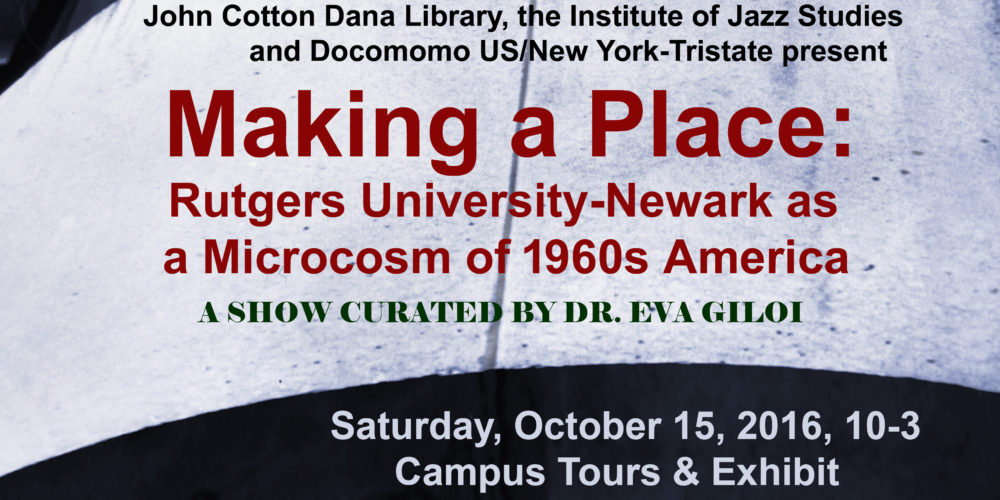
Rhythm 1 (Past) » DOCOMOMO Tour DayRhythm 1 (Past)
DOCOMOMO Tour Day
10:00am - 3:00pm
Meet at John Cotton Dana Library
185 University Ave.
Newark, NJ 07102
Free
The Tour Day features
- Tours in and around the original 1960s campus buildings, on a rolling basis from 10 am to 3 pm. Tours last around 45 minutes and are led by Newark-based architects, preservationists and historians.
- Making a Place: Rutgers University-Newark as a Microcosm of 1960s America: a multisensory exhibit about the campus history and architecture in Dana Library.
- A guided introduction to the Institute of Jazz Studies, the most comprehensive jazz archive in the world.
Shuttle buses to campus will run regularly from Newark Penn Station, easily accessible by PATH train and New Jersey Transit.
The ground-breaking ceremony for the first campus building, Ackerson Hall, took place in 1965. The last of the original buildings, Hill Hall, was built in 1970.
Much happened in the five years in-between.
Located in the heart of Newark, the university was meant from the outset to serve the city and the state, as Rutgers President Mason Gross oversaw the campus development with great plans in mind. The university would provide education and social mobility to baby boomers. It would revitalize the Newark economy by turning the city into a ‘college town.’ It would be the cornerstone for a renaissance in the arts, freeing New Jersey from its dependence on New York and Philadelphia.
To fulfill these lofty ideals, Gross commissioned some of the finest tri-state architects to design the campus buildings. Dana Library, Robeson Campus Center, Conklin Hall, Boyden Hall and Smith Hall were all built together as an ensemble of state-of-the-art modernist design. Architects Kelly & Gruzen drew up the campus master plan in the same years that they constructed the award-winning Chatham Towers in Manhattan; progressive architect Robert L. Geddes completed the design of Hill Hall in the same years that he designed the award-winning Institute for Advanced Study in Princeton.
There were costs, though, to this idealism. As it moved into the Central Ward as part of a larger urban renewal plan for the city, the campus replaced so-called ‘blighted’ areas and displaced poor families, mostly African-American. The university therefore expressed the Great Society’s promise of social mobility, but not its reality – not at first, at least, for most local residents. The imbalance between hope and reality was challenged by students in 1969, as they barricaded themselves into newly completed Conklin Hall to demand greater inclusion into the university.
Providing a space for students to voice their protest against the inequalities of 1960s America, the university developed into a place of inclusion, tolerance and opportunity, finally making Rutgers University-Newark the most diverse national university in America today.
Explore the fascinating history of the campus and its buildings on our DOCOMOMO Tour Day, with tours guided by architects and historians explaining the design and planning of the campus and the surrounding city neighborhood. Explore the university’s relationship to the city and students’ experience of the campus in a multisensory exhibit in Dana Library: Making a Place: Rutgers University-Newark as a Microcosm of 1960s America. Discover Newark’s role in fostering a renaissance in the arts with a guided introduction to the Institute of Jazz Studies, the most comprehensive jazz archive in the world.
Sponsored by Dana Library, the Institute of Jazz Studies, and DOCOMOMO, the world’s leading modernist preservation organization.
